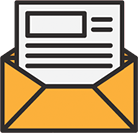
The Internet of Things (IoT) is one of the most transformative technologies of the Fourth Industrial Revolution. Klaus Schwab, in his book The Fourth Industrial Revolution, describes IoT as the “nervous system” of Industry 4.0 — enabling physical objects, machines, and devices to connect, communicate, and exchange data in real time.
This connectivity creates cyber-physical systems where the physical and digital worlds merge, unlocking new possibilities for business, society, and everyday life.

IoT’s development can be seen in three stages:
– Early Sensors & Connectivity (1990s–2000s): Basic devices connected through RFID and wireless systems.
– Expansion Era (2010s): Rapid adoption of smartphones, cloud computing, and connected devices.
– Industry 4.0 Integration (Present): Billions of devices linked with AI, big data, and advanced networks (5G/6G).
As Schwab explains, the speed and scale of IoT adoption is what makes it central to the Fourth Industrial Revolution — everything that can be connected, will be connected.

IoT is reshaping industries and societies through:
– Smart Manufacturing (IIoT): Machines, sensors, and robots communicating in real time for predictive maintenance and efficiency.
– Healthcare: Wearables and remote monitoring devices providing real-time health insights.
– Smart Cities: Connected infrastructure for energy management, traffic control, and public safety.
– Agriculture: Precision farming with IoT-enabled irrigation and soil monitoring.
– Logistics & Retail: Smart inventory management and supply chain optimization.
IoT serves as the foundation layer that connects data with artificial intelligence, creating intelligent systems.


The potential benefits of IoT in Industry 4.0 include:
– Efficiency & Productivity: Real-time monitoring reduces downtime and boosts performance.
– Cost Reduction: Predictive maintenance saves on repairs and operational costs.
– Customer Experience: Personalized services and products tailored through data insights.
– Sustainability: Smart grids, connected energy systems, and efficient resource management.
– Innovation: Enabling new business models such as pay-per-use and outcome-based services.
Schwab emphasizes that IoT will not only change industries but will also reshape the way we live and interact.
Despite its promise, IoT also presents risks:
– Security Vulnerabilities: Billions of connected devices expand the surface for cyberattacks.
– Privacy Concerns: Data collection at massive scale raises issues of surveillance and misuse.
– Standardization Gaps: Lack of common frameworks limits interoperability.
– Dependence & Reliability: Over-reliance on connected systems can lead to systemic risks.
– Inequality: Regions with poor digital infrastructure may be left behind.
As Schwab notes, governance must catch up to ensure IoT adoption benefits all while protecting rights.

To fully harness IoT, Schwab outlines several imperatives:
1. Invest in Secure Infrastructure – Protect systems against cyber threats.
2. Adopt Open Standards & Interoperability – Ensure devices communicate seamlessly.
3. Embed Privacy & Ethics – Safeguard data use and build public trust.
4. Foster Innovation Ecosystems – Encourage startups, businesses, and governments to co-create IoT solutions.
5. Promote Inclusive Access – Extend connectivity to underserved communities.

The Internet of Things is more than connected devices — it is the backbone of Industry 4.0. As Klaus Schwab explains, IoT creates a world where data flows seamlessly between people, machines, and systems, enabling breakthroughs in efficiency, sustainability, and innovation.
By adopting IoT responsibly and inclusively, we can shape a connected future that is smarter, safer, and more sustainable.



